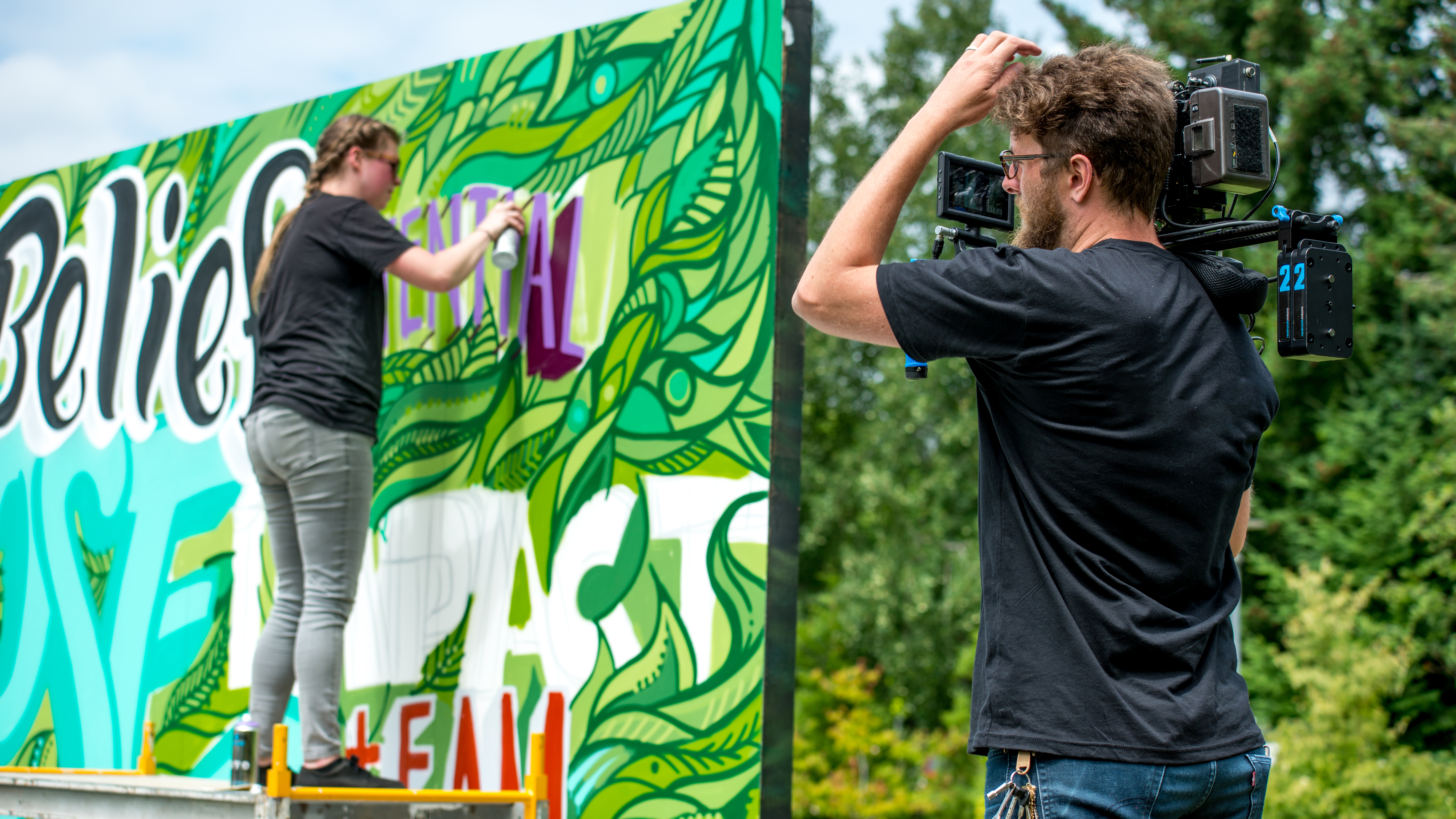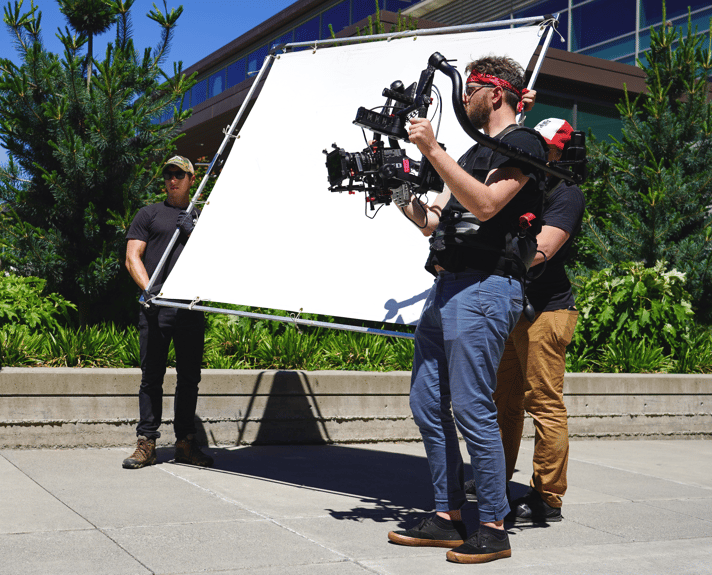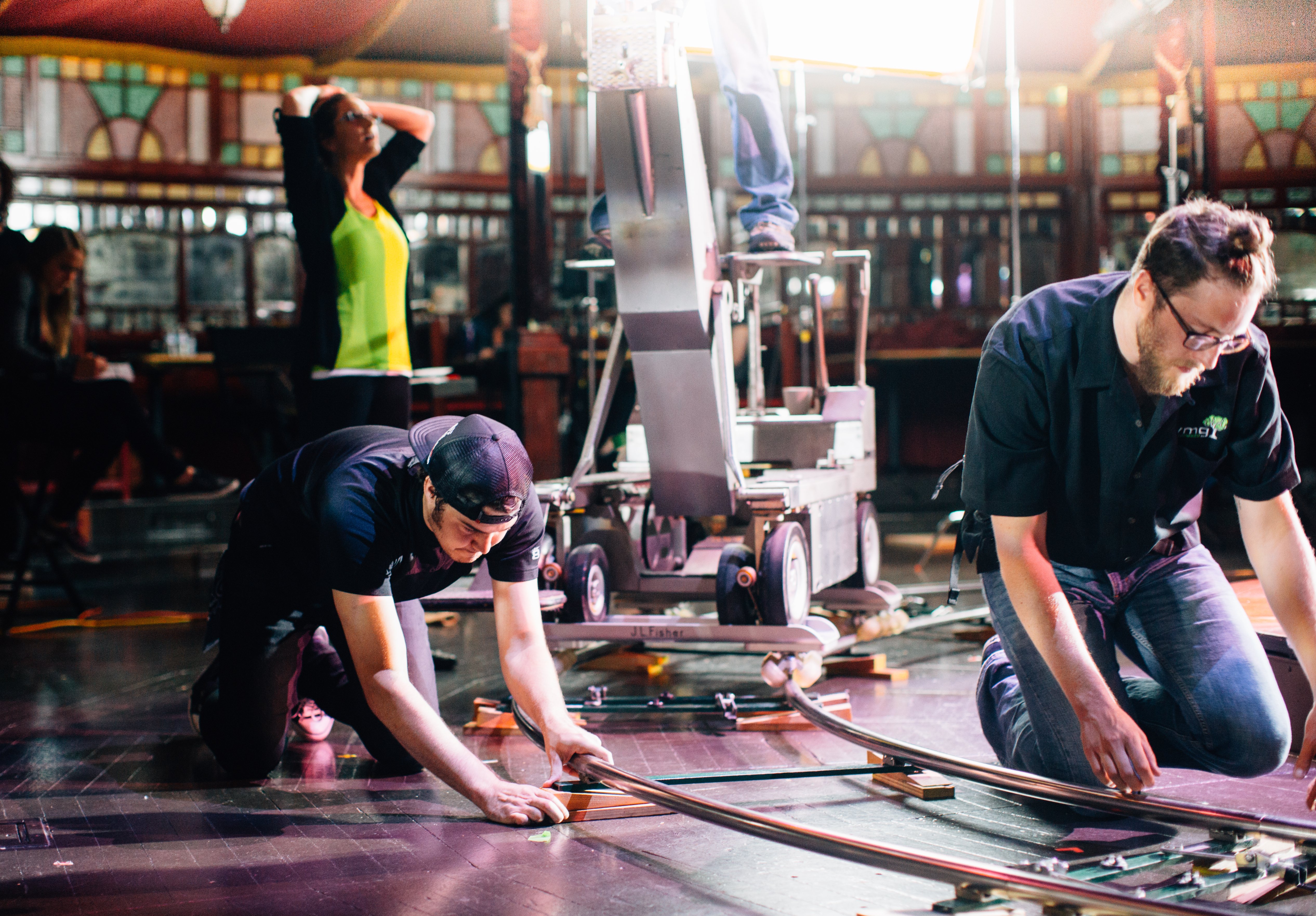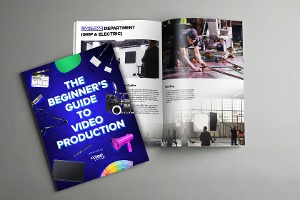
Picture this: you’re sitting in the movie theater and the film just ended. You’re watching the credits roll by waiting for the post-credit cutscene (hello, Marvel movies), and you spot the name of the director. Sure, you probably know what a director does on set. Next, the name for the set dresser rolls by; you may know that one too. But then, a role you’ve never heard before pops up: a gaffer. With this role, and likely several others, you might be wondering ‘what do they do?’ or ‘what does that mean?’
And it’s not just movies. Maybe you’ve been on the set of a commercial production for the company you work for, or maybe you’re the one hiring a production company for a video project and you don’t know how many people you’ll need, why you need that many people, and how much it’ll all cost.
In this article, we’re breaking down the major roles of a video production so you can have a better understanding of who you’ll be interacting with on set, what they do, and why you’re paying for them.
Different Departments on a Video Production Set
A way to organize the people on set is by breaking them up into job/equipment-specific departments:
- Camera
- Lighting (Grip & Electric)
- Art
Under each department are several assigned roles, so let’s dive a little deeper into each one.
Camera Department
Director of Photography/Cinematographer
The Director of Photography (DP) is in charge of how the final video looks, including camera movement, shot composition, lighting, etc. The DP is also in charge of managing the set and its various departments, especially the lighting department.
Camera Operator
Sometimes the DP will run the camera, but often on bigger productions, the DP will delegate that job to a camera operator. This frees the DP up to focus on other tasks such as making sure the lighting and overall look and feel are consistent shot-to-shot and scene-to-scene. When this happens, production will hire operators for the various cameras running in the scene.

Camera Assistant
The Camera Assistant (AC) works directly with the camera operator. Their duties include slating each take (marking a sync point between the video and audio with a clapper board), ensuring the right things are in focus at the right times, and changing batteries and recording media.
Typically, each camera will have an AC, so if you have 3 cameras running at the same time (as is common in classic sitcoms, for example) you’ll have an A cam AC, B cam AC, and C cam AC. The AC’s duties can be split up into multiple people if the job calls for it. For example, the 1st AC is in charge of focus pulling, whereas swapping batteries will be delegated to the 2nd AC.
Lighting Department (Grip & Electric)
Grip vs. Electric
Grip and electric are two departments that work closely together. In a nutshell, anything that carries an electric current (lights, generators, extension cords, etc.) is handled by the electricians, and everything else (stands, flags, diffusion, etc.) is covered by the grips.
Gaffer
The Gaffer is the head of the electricians and works to set up lighting as per the DP’s requests. Sometimes the DP will have a very specific idea of how they want a scene lit, marking specific light fixtures in specific spots. Other times they will have a general idea or feeling they are looking for and it’s up to the gaffer to decide how best to achieve it.
Fun fact: the name “gaffer” has a couple of different origin stories. It could either be a contraction of “godfather,” which was a term of respect used with foremen and supervisors or from the long metal hook that was used to adjust stage lighting — a “gaff hook.”
Key Grip
The Key Grip is the head of the grip department which handles the stands, light modification, and rigging on a set. Need a light hung from the ceiling? The grips will handle that. Want that light to be more diffused? The grips will hand that. Running the camera on a dolly that needs track laid? You get the picture.

Best Boy
This job comes in two flavors, Best Boy Grip and Best Boy Electric. They are just the second-in-command for their respective departments. Their job is usually more administrative, encompassing things like hiring and scheduling crew, renting, ordering, maintaining equipment, and completing time cards and other paperwork.
Art Department
Production designer
The Production Designer (PD) talks with the DP and the Director and comes up with the concepts and overall vision for what elements are in the scene. This includes props, wardrobe, background elements, etc.
Art Director
The Art Director takes the concept from PD and handles overall implementation, including running the art department team, under the leadership of the PD. You could say that the PD is the brain coming up with the idea, while the Art Director is the body, executing on that plan.
Set Dresser
This person is in charge of staging the set before filming begins. For example, if the scene is in a coffee shop, they’ll arrange furniture, hang pictures, stack coffee mugs behind the counter, etc. They’re also in charge of the continuity of the scene. Scenes include several takes and can be filmed out of order, so it’s the set dresser’s job to make sure the decorations are in the same spot. That way you don’t have one take that has a bagel on a plate next to the actor, and then the next take, it’s mysteriously gone.
Final Thoughts
Everyone who comes together on set plays a crucial role in bringing that project to a successful end. Having people working in all departments ensures that the crew can focus on their individual jobs, rather than trying to cover all the bases. That being said, budget constraints can lead to trimming the crew down; the DP can also wear the camera operator hat and less involved lighting setups means you need fewer grips and electricians. Making a video is a team sport and it’s important to know who to hire to make your video a success.
Learn more about video by clicking the image below to download the free eBook: The Beginner's Guide to Video Production.






